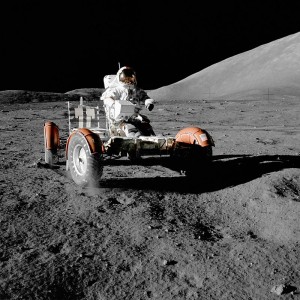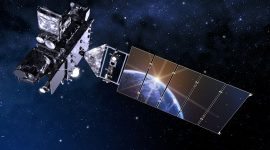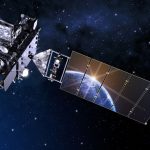Why has NASA Never Returned to the Moon?
Why has NASA never returned to the Moon since the Apollo 17 mission in 1972? Was it due to "budget cuts" as NASA would have us believe, or is there another, darker reason?

Carl Sagan said once – “All civilizations become either spacefaring or extinct.” Perhaps this kind of thinking could have been one of the reasons behind president Bush’s 2004 proposal to return to the Moon, this time “to stay” with a lunar outpost. The proposal stimulated vigorous debate at the time, but no tangible results followed. It was argued that robotic missions were efficient enough and that there was no immediate necessity to “colonize” the Moon the way America was colonized by the Europeans – by building outposts and sending people to the location.
In 2006 NASA posed the question “Why should we return to the Moon” to a group of scientists, engineers, commercial entrepreneurs, space advocates, and the general public. The poll took a year to complete and resulted in a number of replies that could be grouped in a number of more general “reasons why”.

The following major areas of development and their underlying rationale were proposed:
Human Civilization
Extend human presence to the moon to enable eventual settlement.
Scientific Knowledge
Pursue scientific activities that address fundamental questions about the history of Earth, the solar system and the universe – and about our place in them.
Exploration Preparation
Test technologies, systems, flight operations and exploration techniques to reduce the risks and increase the productivity of future missions to Mars and beyond.
Global Partnerships
Provide a challenging, shared and peaceful activity that unites nations in pursuit of common objectives.
Economic Expansion
Expand Earth’s economic sphere, and conduct lunar activities with benefits to life on the home planet.
Public Engagement
Use a vibrant space exploration program to engage the public, encourage students and help develop the high-tech workforce that will be required to address the challenges of tomorrow.
Lunar Exploration Objectives
Almost 200 lunar exploration objectives resulted from the Global Exploration Strategy process. NASA engaged the global space community to develop the objectives by asking the question, “What do we hope to accomplish through lunar exploration?” The answers allowed NASA to compile a “comprehensive database of almost 200 things NASA could do on the Moon.”

The latest discoveries about the ways of the Universe have shown distinctly that it is not a safe place for any life form and much of it’s evolution is about destruction and recreation – an infinite chain of events that pave new grounds for whatever is coming next. Going back some 65 million years, it is now essentially proven that an impact wiped out not only the dinosaurs but most species living on Earth at the time. The importance of catastrophic impacts has only been demonstrated in recent decades, and space exploration has played a key role. The bleak conclusion to which these facts point is that humanity is vulnerable as long as we are confined to one planet.
Given the above, the inevitable question looms over the entire NASA space exploration program: why has NASA never returned to the Moon since December 14, 1972 when the man set foot on the Moon for the last time? Apollo 17 was officially the last Moon-landing mission. Having reached the conclusion that our very survival as a species eventually depends on whether or not we will be able to set up colonies outside Earth, there is no room for justifying the procrastination in Moon colonization with huge costs (both financial and in human lives) that don’t translate into immediate economic benefits.
Could it be technical problems and complications then that have been holding NASA back for so many years? One could hardly agree with the argument. 42 years after the Apollo 17 mission our technological capabilities have vastly improved. By today’s standards, the IT NASA used in the Apollo manned lunar program was pretty basic. The computers used were no more powerful than a pocket calculator of today. The so-called Apollo Guidance Computer (AGC) used a real time operating system, which enabled astronauts to enter simple commands by typing in pairs of nouns and verbs, to control the spacecraft. It was more basic than the electronics in modern toasters that have computer controlled stop/start/defrost buttons. It had approximately 64Kbyte of memory and operated at 0.043MHz.
Is it possible then that there is another, darker reason for NASA not having returned to the Moon for the last 42 years? There is a theory according to which the Apollo 11 and the few following lunar missions were not alone on the surface and encountered alien activity. Some say the encounter was expected because the US government had been aware of the ET presence on the Moon at least since the alleged Eisenhower’s meeting/negotiations with the aliens at the Holloman Air Force base in 1954. If this was the case, it could easily explain the reasons for the alleged staging of the entire Moon landing TV broadcast. In fact, this would make all the pieces come together into a neat picture – NASA did send manned mission to the Moon, but for other reasons than those official and presented in the “live” Moon landing broadcast. This would explain how the two opposing sides of the discussion – the mainstream and the conspiracy theorists – can have it right at the same time.
In reply to the question posed in this article the conspiracy theorists say this: NASA has never officially returned to the Moon because it was fended off the by aliens who have established their bases on the dark side of the Moon and made it clear that our presence was not welcome. However, NASA may have been sending secret missions there for unknown reasons. See the following documentary and be the judge.





















